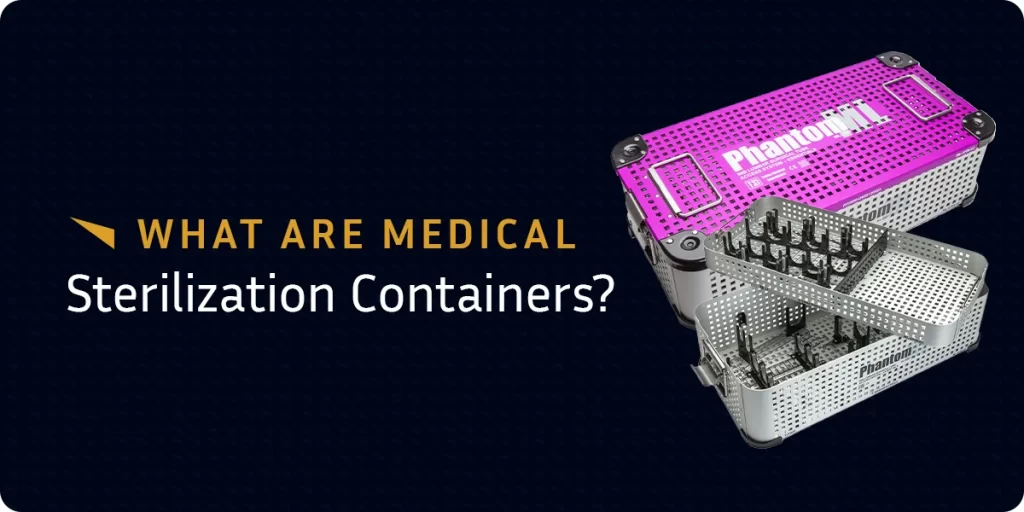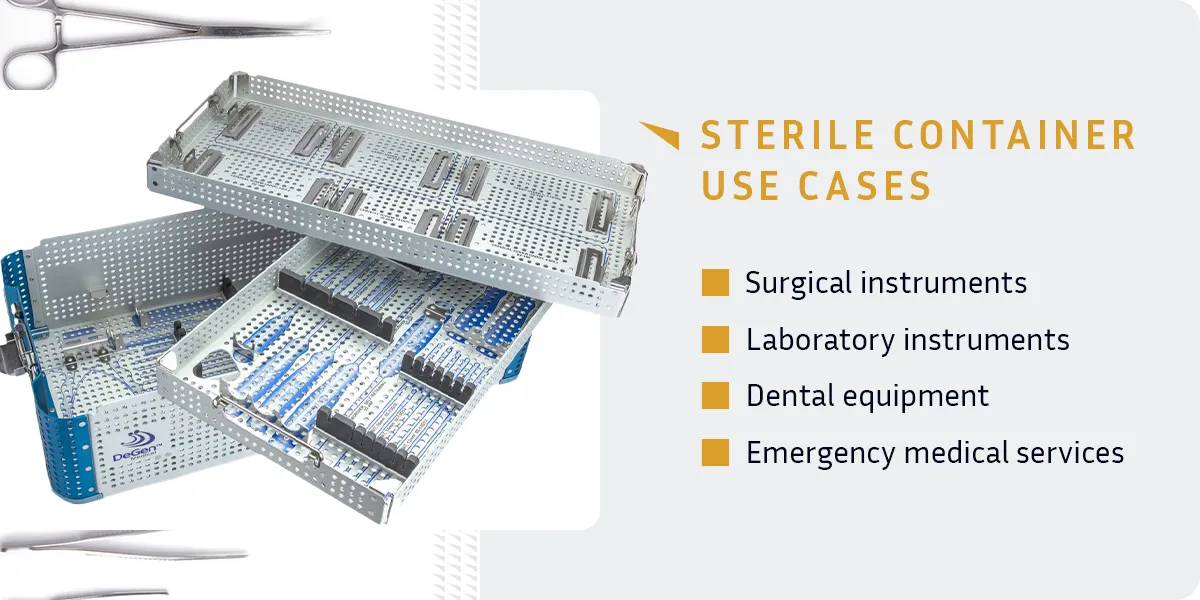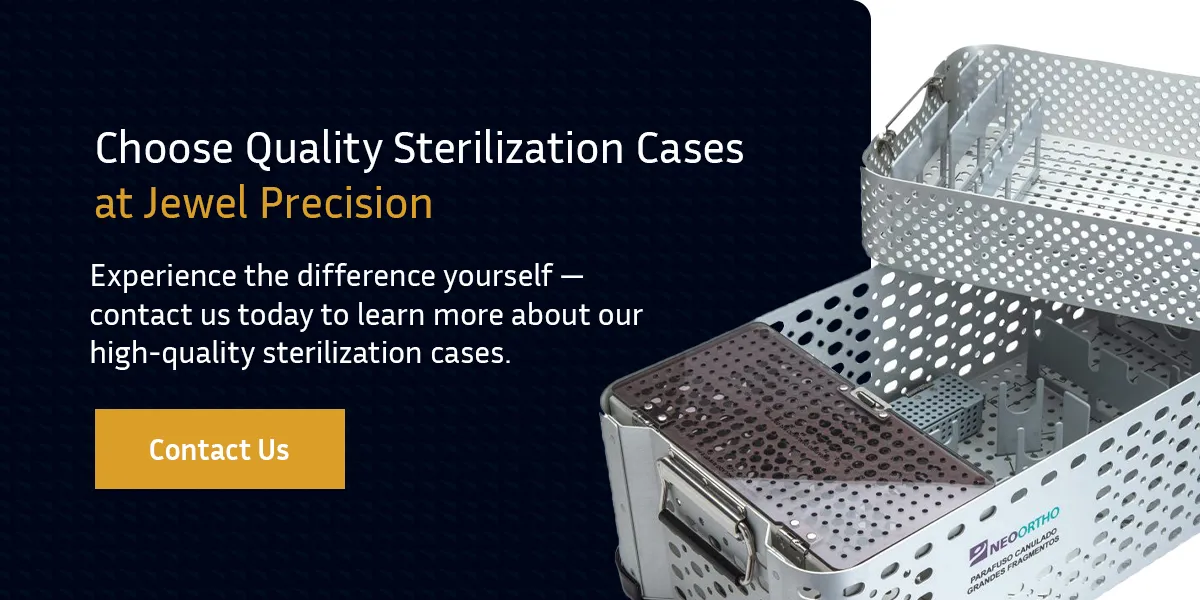
Medical sterilization containers are critical to any health care practice. They protect surgical instruments and medical devices from harmful pathogens during sterilization, transportation and storage, maintaining a sterile environment until the instruments are ready for use. Proper use can help you meet stringent regulatory requirements and create a safer, more efficient workflow.
What Are Sterilization Containers?
Sterile containers are specialized devices used to hold surgical instruments and other medical items during sterilization. They are engineered to withstand the rigors of autoclaving — the widely accepted sterilization method that uses steam under pressure to eliminate bacteria, viruses, fungi and spores.
Key features of medical sterilization containers include:
- Durability: Sterilization containers are made of robust materials that can handle the harsh temperatures and pressures associated with autoclaving. Aluminum is a top choice for its durability and longevity.
- Ventilation: Designed with filters or vents that allow steam to circulate freely, sterilization containers ensure that all surfaces of the instruments are exposed to the sterilizing agent.
- Ease of use: Many sterilization containers include mechanisms for quickly loading and unloading instruments, making them user-friendly for medical staff.
- Reusability: Unlike single-use sterilization bags, medical sterilization containers are reusable, making them a sustainable option for medical facilities.
By providing a sterile barrier, medical sterilization containers ensure your instruments can be safely reused in medical procedures, reducing the risk of infections.
Why Sterilization Trays Are Necessary
Sterilization trays are critical in health care settings where the risk of infection is a constant concern. These specialized tools protect your instruments from contaminants before, during and after sterilization. With a sterilization tray, you can rest assured your instruments are sterile when stored and handled.
Ensuring Sterility and Safety
Sterilization trays keep medical instruments and devices sterile. Patient safety is paramount in hospitals, practices and other health care settings, and ensuring instruments are free from harmful pathogens is critical. These trays help prevent infections and complications during medical procedures. They provide a protective barrier that shields instruments from contamination, keeping them sterile for procedures.
Organization and Efficiency
Sterilization trays organize and store instruments during the sterilization process. They consist of designated compartments for each instrument, helping you keep track of your tools and prevent anything from being misplaced or lost. This organization can enhance efficiency while keeping your medical operations running smoothly.
Protection During Handling and Storage
Beyond sterilization, these trays protect instruments during handling and storage. Once sterilized, your instruments must be stored in a specific way to maintain sterility until needed. Sterilization trays provide a safe, secure environment for your tools, preventing any damage or contamination that can occur during transportation and storage. This extra layer of protection can help your organization maintain the quality and safety of its instruments over time.
Compliance With Regulations and Standards
Sterilization trays are critical in ensuring compliance with health care regulations and industry standards. For instance, the Federal Drug Administration (FDA) and the Centers for Disease Control and Prevention (CDC) have strict guidelines about sterilizing and storing medical instruments. These standards are put in place to prevent infections and keep patients safe. Sterilization trays can help you meet these standards and demonstrate your commitment to delivering high-quality, safe patient care.
Longevity and Reusability
Sterilization trays are designed for durability and reusability, making them a cost-effective, sustainable option for your organization. Unlike single-use packaging or disposable options, these containers can withstand multiple sterilization cycles, so you don’t have to replace them frequently. This can contribute to significant cost savings over time. Their longevity and reusability make sterilization containers a practical choice when you want to optimize resources and reduce waste.
Sterile Container Use Cases
Medical sterilization containers play an essential role in the medical field, offering a reliable solution for the safety and efficacy of medical procedures. They can be used in various settings to maintain sterile environments, most commonly used for:

- Surgical instruments: Containers hold scalpel blades, scissors and other surgical tools in surgical settings — keeping them secure and sterile until the moment of surgery.
- Laboratory instruments: Sterilization containers are essential in research and laboratory settings. They help maintain the integrity of tools used in experiments and analyses.
- Dental equipment: Dentists rely on sterilization containers to keep tools like drills and mirrors free from contamination between patients.
- Emergency medical services: First responders use sterilization containers to ensure that medical equipment, such as defibrillators and bandaging tools, is sterile and ready for emergencies.
Sterilization Container Compositions
When choosing a sterilization container, it’s critical to consider its composition, as the material can impact its effectiveness and durability. The right container can maximize your efficiency and ensure your instruments stay in top condition. Here is a breakdown of the more common sterilization container materials:
Plastic
Plastic sterilization containers are typically used for single-use applications. While not as durable as metal options, they can create a compound substance to withstand harsher conditions once combined with glass or steel. Some high-quality plastic containers can be used in settings or applications where cost, weight and flexibility are big factors.
Stainless Steel
Known for its strength and corrosion resistance, stainless steel is another popular choice for sterilization containers. Since stainless steel is durable and long-lasting, it is often well-suited for environments that require rigorous sterilization practices. However, it can still be susceptible to scratches or dents if not handled with care, impacting performance and longevity.
Aluminum
Aluminum is a popular medical container material with unique benefits that set it apart from the others. Lightweight and corrosion-resistant, these containers are highly durable and easy to handle. Due to their strength and efficiency in heat conduction, they are often used in surgical settings. While steel may be stronger considering its weight-to-strength ratio, aluminum is noncorrosive and malleable, so you can transform and customize your case without breaking the material.
Additionally, aluminum is significantly lighter than steel and rust-proof due to its chemical makeup. You can rest assured that your aluminum medical container will be rust-free even after repeated sterilization and water treatments.
Choose Quality Sterilization Cases at Jewel Precision
Sterilization trays are a crucial component in the medical field. They serve various functions, maintaining sterility, organization, protection, compliance and sustainability for your organization. Enhance the safety and sterility of your medical instruments with Jewel Precision’s high-quality sterilization cases. Our durable aluminum cases are compatible with autoclaves, protecting your instruments while withstanding repeated cleanings and daily use.
Jewel Precision is your one-stop shop for all medical cases and tray needs, offering fast lead times, competitive pricing and exceptional customer service. Experience the difference yourself — contact us today to learn more about our high-quality sterilization cases or to place an order.
